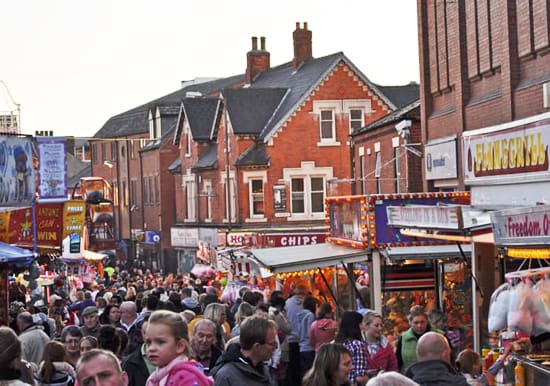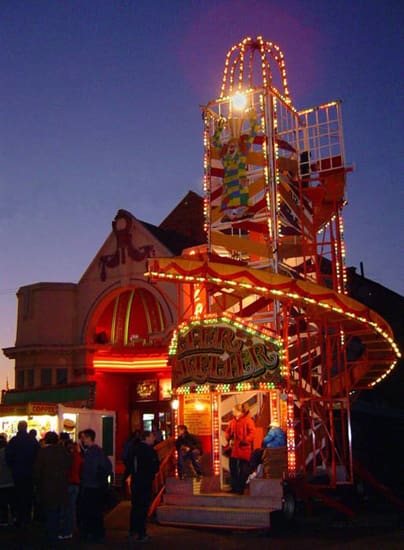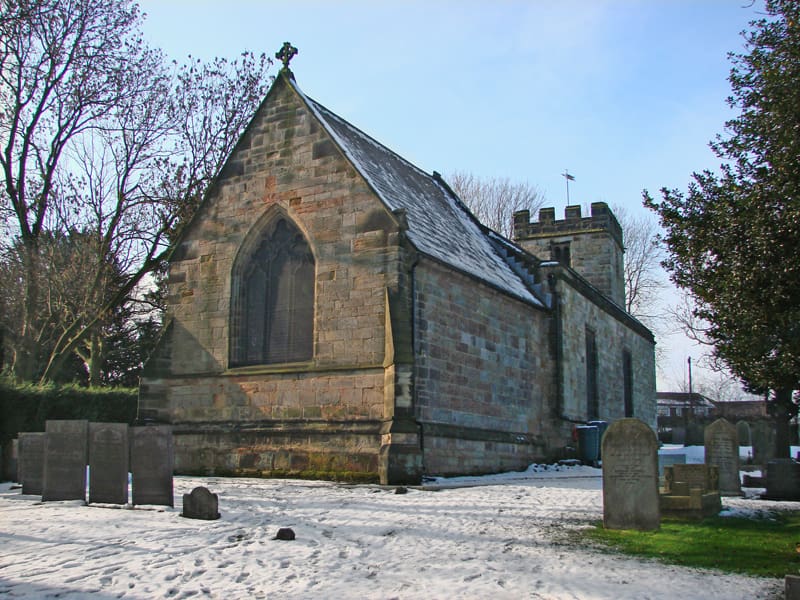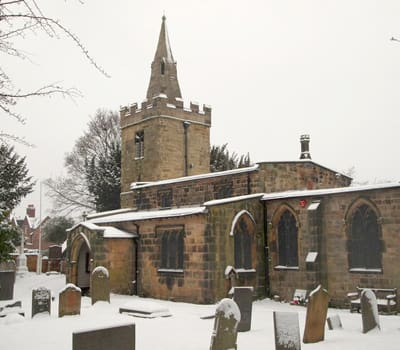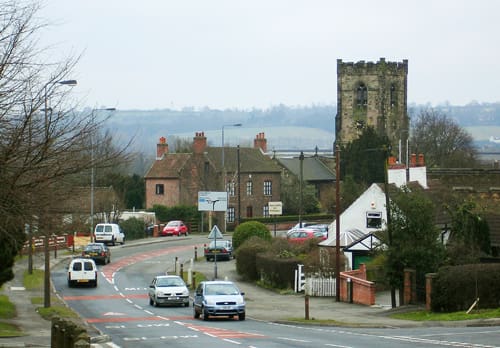Introduction
King Henry III granted a Charter Hugh de Muskham on April 10th in the year 1252. The charter gave the Lord of the Manor and the townsfolk of Ilkeston the right to hold a market on the Thursday of every week and an annual two day fair on the Assumption of The blessed Virgin Mary in August.
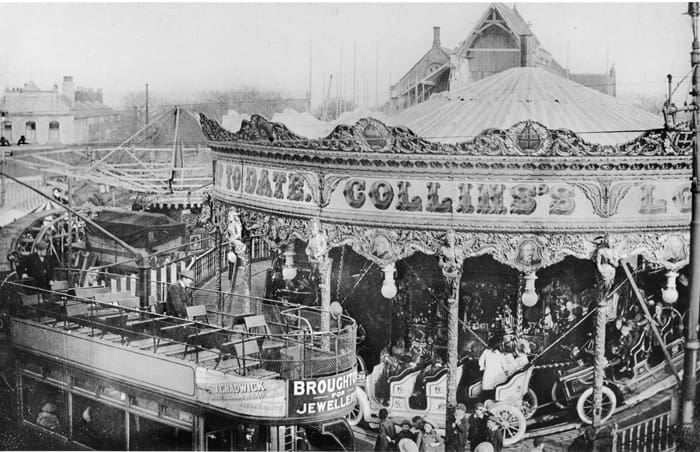
Today, the original Thursday market has been joined by a Friday and Saturday market, while the annual fair now takes place during the third week of October and spreads from Wednesday afternoon to Saturday evening.
Each year the words of the original Charter are read out to the assembled crowds, gathered beneath the balcony of Ilkeston Town Hall, after which two brass bells are rung to officially open what is certainly one of England’s oldest and largest street fairs.
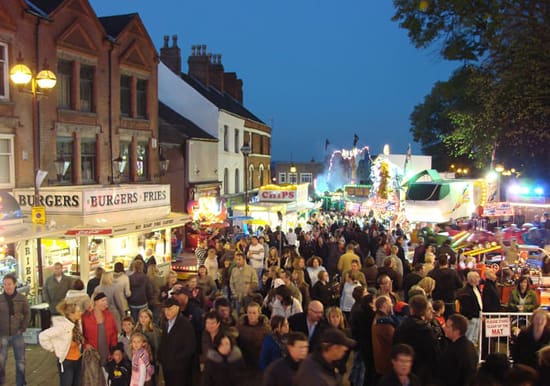
Following the opening, the mayor and visiting dignitaries from neighbouring boroughs start a tour of the fair by riding the dodgems.
The Origins of the Market Place
Originally, along with the many religious festivals held throughout the year, the markets and fairs would have been held in the church yard: the village priest adding to his coffers the fees paid by traders for the privilege. As in every other town and village throughout the land, Ilkeston’s early market traders would have outgrown the confines of the small church yard and would have required the establishment of larger and more permanent sites, though still close to the church.
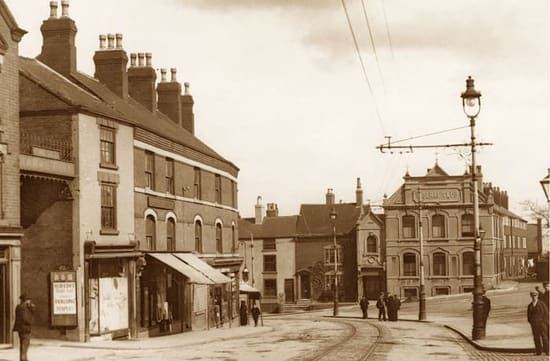
Ilkeston’s original medieval market place stood to the north side of the church yard. This site can be found at the top of the present day Bath Street and where part of the weekly market is still held to this day. However with the town expanding rapidly during the early 19th century, a larger and more accessible market place was required and so in the late 1840s, an area of farmland was cleared to the west side of St Mary’s for this purpose. Although there have been times over the centuries when the market almost fell into disuse, or attempts made to remove it to another location, this site is still the market place we see and use today.
Ilkeston Charter Fair
As already mentioned, the original annual fair was granted in 1252 and was held during August. The ancient market place and church yard would have been witness to a colourful and noisy mixture of agricultural trading, street entertainments, peddlers and no doubt the gruesome spectacles of bear baiting, dog and cock fighting and the occasional public punishment of the odd local felon or two.
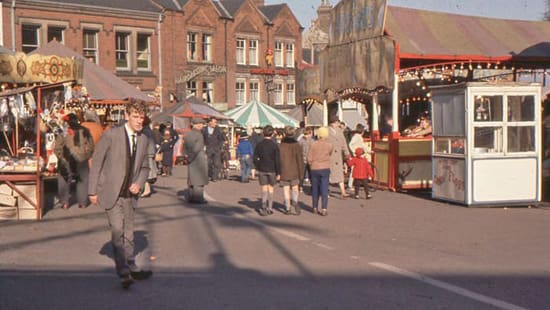
As the centuries passed, another occasion joined the annual calendar. This was the Statutes or Hiring fair, whereby agricultural labourers would gather in the town and hope to seek winter employment from the farmers land owners of the district.
In time, the hiring fairs began to feature similar entertainments to those seen during the August Charter fair. These events also began to spill out from the Market Place and into adjacent areas such as South Street and Pimlico.
In 1888 both the August Charter fair and the October fair were combined into one event to be held during the third week of October and thus raised Ilkeston fair’s status amongst showmen throughout the country. Apart from a short break during the First World War, the Ilkeston Charter Fair has been held on the Market Place since that date.

Today, the fair is visited by tens of thousands over a period of four days and many Ilkestonian ‘ex-pats’ will travel from far and wide to experience and re-live the sounds, sights, smells and thrills enjoyed many years ago.
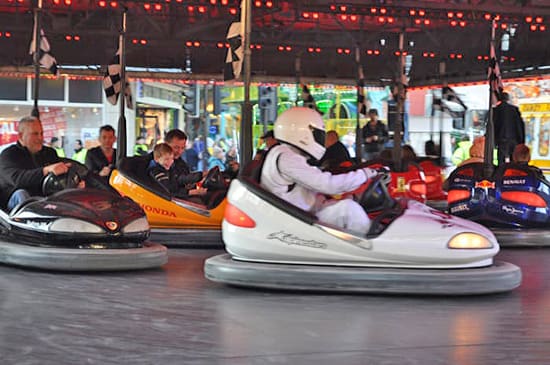
The visitor will find a multitude of entertainments, rides and sideshows, which today fill the Market Place, Wharncliffe Road, South Street, Queen Street, Pimlico and East Street and a way down Bath Street too.
